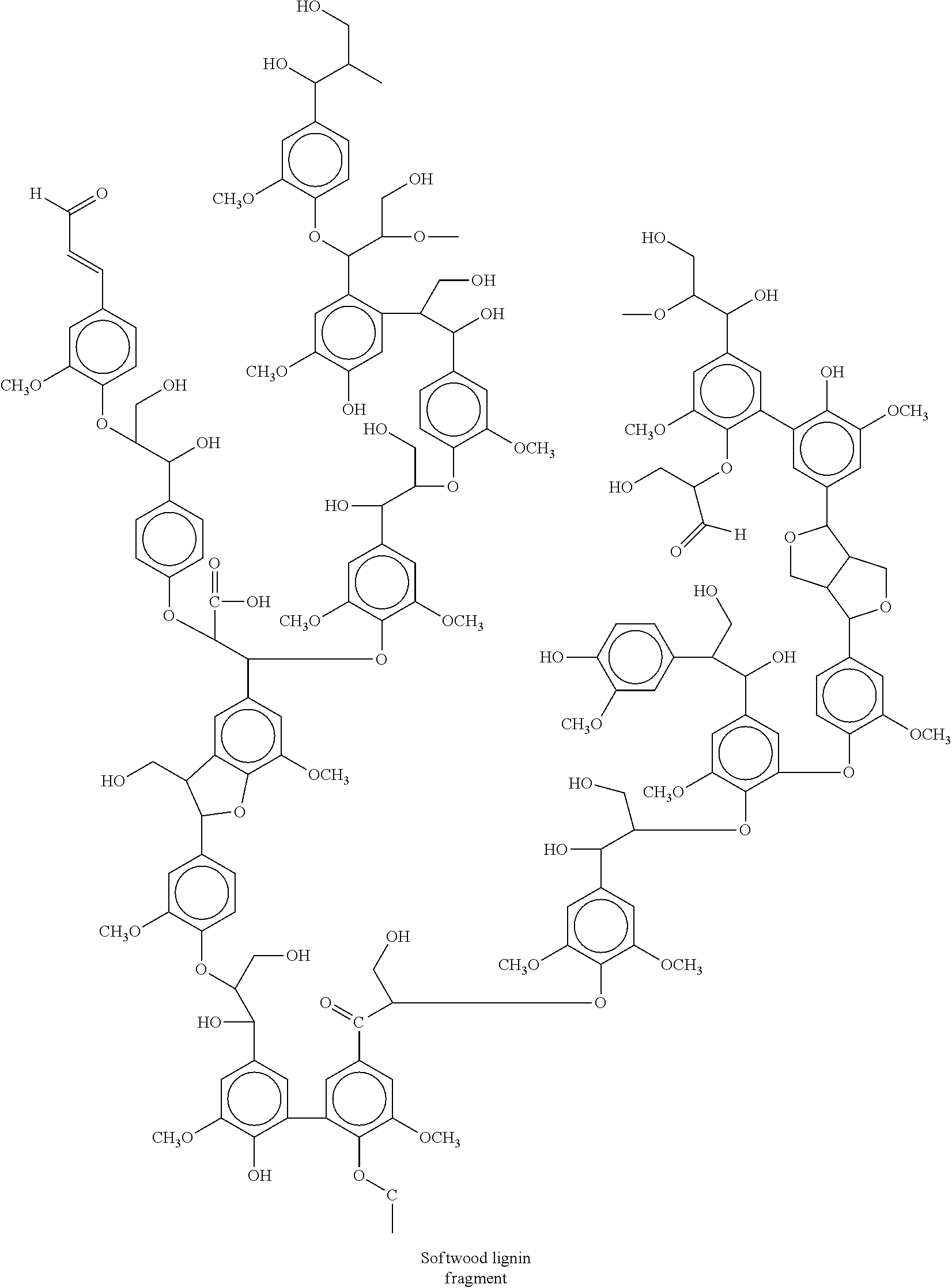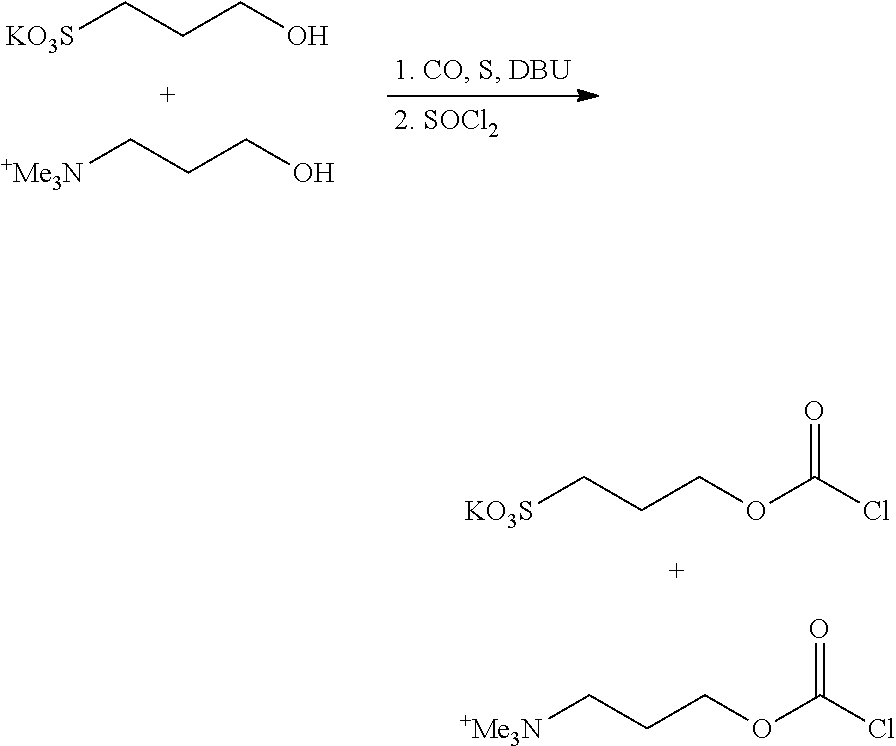Zwitterionic lignin derivatives for marine antifouling coatings
a technology of zwitterionic lignin and derivatives, applied in the direction of gum massage, dental floss, packaging goods type, etc., can solve the problems of premature breakdown of wetted structures and surfaces, interfering with the normal use and condition of surfaces or structures, and biofouling can in some cases also represent health and safety hazards, so as to hinder or delay the biofouling process
- Summary
- Abstract
- Description
- Claims
- Application Information
AI Technical Summary
Benefits of technology
Problems solved by technology
Method used
Image
Examples
example 1
Synthesizing a Zwitterionic Biopolymer Compound Having 3-Sulphopropyl and 2-(trimethylammonium) Functional Groups
[0094]A zwitterionic biopolymer antifouling composition is prepared by a multistep process comprising first synthesizing a biopolymer matrix having both positive and negative functional groups. This may be done by first preparing positive and negatively charged chloroformates as shown below. All the steps in this process are performed at room temperature.
[0095]The preparation of the negatively charged chloroformate is performed by treating 3-sulphopropyl potassium salt with carbon monoxide and sulphur in 1,8-Diazabicycloundec-7-ene (DBU) to yield a S-methyl-O-phenyl carbonthioate and reacting the resultant S-methyl-O-phenyl carbonthioate with sulfanyl chloride to form a 3-sulphopropyl chloroformate.
[0096]The preparation of the positively charged chloroformate is performed by treating 2-(trimethylammonium chloride) ethanol with carbon monoxide and sulphur in 1,8-Diazabicyc...
example 2
Synthesizing a Zwitterionic Composition Comprising a Positively Charges Biopolymer and a Separate Negatively Charged Biopolymer
[0099]A zwitterionic antifouling composition is prepared by first synthesizing a biopolymer matrix having both positive and negative functional groups by separately preparing positive and negatively charged chloroformates as shown below.
[0100]Preparation of the negatively charged chloroformate is prepared by treating 3-sulphopropyl potassium salt with carbon monoxide and sulphur in 1,8-Diazabicycloundec-7-ene (DBU) to yield a S-methyl-O-phenyl carbonthioate and reacting the resultant S-methyl-O-phenyl carbonthioate with sulfuryl chloride to form a 3-sulphopropyl chloroformate.
[0101]Preparation of the positively charged chloroformate is performed by treating 2-(trimethylammonium chloride) ethanol with carbon monoxide and sulphur in 1,8-Diazabicycloundec-7-ene (DBU) and then reacting the resultant compound with sulfuryl chloride to form a 2-(trimethyl ammonium...
example 3
Synthesizing a Zwitterionic Biopolymer Compound Having Zwitterionic Functional Groups
[0106]The method comprises first dissolving lignin in dimethylsulfoxide containing pyridine, 1,8-bis(dimethylamino)naphthalene to form a dissolved lignin and then combining the dissolved lignin with a chloroformate of a zwitterionic compound selected from a sulfobetaine acrylate, a sulfobetaine acrylamide, a sulfobetaine vinyl compound, a sulfobetaine epoxide, a sulfobetaine methacrylate, a carboxybetaine acrylate, a carboxybetaine acrylamide, a carboxybetaine vinyl compound, a carboxybetaine epoxide, a carboxybetaine methacrylate, a cephalosporin-based antimicrobial functional group, a cefepime, a cephaloridine, or a combination thereof.
[0107]Once the zwitterionic biopolymer compound is synthesized, it can then be dried to form a powder and mixed into standard paint or varnish formulations for application to the hull of a vessel or other surface that might be subject to biofouling. Given potency of...
PUM
| Property | Measurement | Unit |
|---|---|---|
| Fouling properties | aaaaa | aaaaa |
| Antimicrobial properties | aaaaa | aaaaa |
| Antifouling properties | aaaaa | aaaaa |
Abstract
Description
Claims
Application Information
 Login to View More
Login to View More - R&D
- Intellectual Property
- Life Sciences
- Materials
- Tech Scout
- Unparalleled Data Quality
- Higher Quality Content
- 60% Fewer Hallucinations
Browse by: Latest US Patents, China's latest patents, Technical Efficacy Thesaurus, Application Domain, Technology Topic, Popular Technical Reports.
© 2025 PatSnap. All rights reserved.Legal|Privacy policy|Modern Slavery Act Transparency Statement|Sitemap|About US| Contact US: help@patsnap.com



